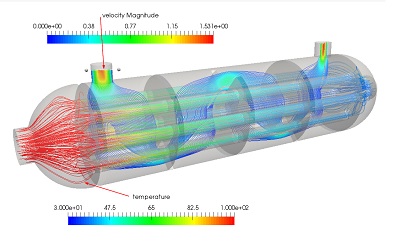Computer-aided engineering refers to the utilization of computer software to imitate and assess the functionality of engineering designs. This process is integral to the product development lifecycle and finds application in diverse engineering domains such as mechanical, civil, electrical, and aerospace engineering. The primary function of CAE tools is to assist engineers and designers in conceptualizing, scrutinizing, and refining designs before tangible prototypes are fabricated. Hence, engineers with expertise in CAE are in high demand, and acquiring these skills can make individuals more competitive in the job market. All you need to do is go through the CAE courses and choose the one that caters to your requirements.
A well-structured curriculum covering the essential aspects of CAE, including both theory and practical application, is crucial for a thorough understanding of the subject. To help you navigate this decision-making process, here are the top five tips to choose the right CAE course for your engineering career.
Top 5 Tips for Choosing the Right CAE Course
The selection of the right CAE course stands as a pivotal step towards constructing a prosperous engineering career. Here are some tips that will help you find the right CAE course.
1 Take a Moment to Reflect on Your Career Goals and Objectives
Before you start exploring CAE courses, it is essential to have a clear understanding of your career objectives. Determine the specific areas of CAE that align with your professional goals. A clear comprehension of your career objectives serves as a guiding beacon in the search for the right CAE course. Moreover, by harmonizing your career goals with the specialized offerings of CAE courses, you can choose programmes that cater to specific engineering domains, be it finite element analysis, computational fluid dynamics, or structural analysis. This targeted approach ensures that the chosen CAE course not only hones your skills but also directly contributes to your envisioned career trajectory, adding substantial value to your professional development.
2 Examine the Course Content and Curriculum
The success of a CAE course largely depends on its content and curriculum. So, carefully scrutinize the course content and curriculum offered by different CAE programs. It enables you to determine whether the course adequately covers the tools, techniques, and applications pertinent to your area of interest. Further, verify if the course integrates real-world case studies and hands-on projects to enhance the pragmatic application of acquired knowledge.
3 Look for Courses with Practical Applications and Projects
Theoretical knowledge is foundational, but the application of that knowledge is crucial for mastering CAE. Look for CAE courses that prioritize practical application through hands-on exercises and real-world projects. Practical application reinforces theoretical concepts and hones your problem-solving skills. Similarly, projects that simulate real-world engineering challenges provide a valuable opportunity to apply CAE tools in a controlled environment.
4 Choose a Course with Access to Industry-Standard Software
Since CAE heavily relies on specialized software, it is imperative to choose a course that provides access to the latest tools and resources. Investigate whether the course offers hands-on experience with industry-standard software used in engineering practices. Access to such software allows you to develop practical skills and familiarity with tools commonly used in the professional sphere.
Further, inquire about the availability of resources such as simulation models, datasets, and documentation. A course that provides a rich set of resources enhances your learning experience, allowing you to explore diverse applications and scenarios.
5 Check Reviews and Testimonials from Previous Students
While researching CAE courses, check reviews and testimonials from previous students. Remember, positive feedback regarding the course structure, instructor effectiveness, and overall learning experience can provide valuable insights.
Final Thoughts
CAE enables engineers to explore a wide range of design options and quickly evaluate their performance. This dynamic field fosters innovation and the creation of optimized, high-performance products. However, the key lies in selecting the right course. Opting for the appropriate CAE course is not only about acquiring essential skills; it also serves as the bedrock for embarking on a fulfilling and impactful engineering journey. So, should you be looking for an institute that provides the best CAE courses, join Niharika Institute of Computational Engineering. We offer structured courses that cover the fundamentals and advanced aspects of CAE.













